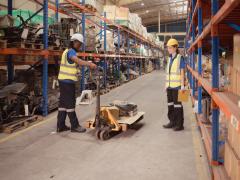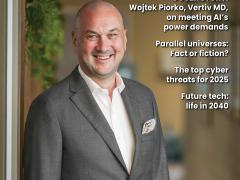South Africa talks a lot about its engineering skills crisis. We see it in collapsing infrastructure, stalled energy projects, the slow rollout of digital transformation, and basic gaps that hold back growth. Every sector is competing for the same limited pool of engineers.
But there is a blind spot in this conversation that we almost never confront. While we worry about the shrinking pipeline, we ignore the biggest untapped source of engineering talent in the country: women. For decades, South Africa has been running an engineering marathon with one leg tied up. The consequences are starting to show.
The crisis behind the crisis
Women make up half the population, yet only a tiny fraction of registered engineers. The percentages vary depending on the data source, but they hover around the same theme: South Africa’s engineering workforce is overwhelmingly male.
Beyond the glaring social imbalance, this is an economic constraint.
Every national development plan, every municipal infrastructure project, every private sector innovation drive relies on engineering skills. When the talent pool is this small, projects stall, maintenance slips and innovation slows. It makes no sense to keep talking about scarcity while excluding the group most capable of increasing the numbers.
South Africa cannot meet its infrastructure, energy, digital or economic goals without expanding its engineering workforce. And expanding the workforce means drawing women in, training them well and keeping them in the profession long enough to lead.
Modern engineering needs more than technical muscle
One of the biggest misunderstandings about engineering is that it is still the same profession it was thirty years ago. The stereotype of heavy machinery, calculations and quiet technical silos persists, but it no longer reflects the reality of global engineering work.
Engineering today is human-centred and technologically enabled. Whether we are designing transport systems, developing renewable energy solutions, planning water management networks or building software ecosystems, the questions have changed. Engineers now work at the intersection of technology, people and context. They need to understand how systems affect communities, how design choices influence user behaviour, how ethical considerations shape innovation, and how different groups experience the built environment.
In short, modern engineering requires emotional intelligence, communication, collaboration, contextual awareness and multimodal thinking. These are no longer optional extras.
And this is exactly where the absence of women becomes a limitation.
The strengths women bring to the future of engineering
When women enter engineering teams, the design conversation shifts. There is broader discussion, stronger user focus, more contextual sensitivity and often a clearer understanding of how infrastructure and technology land in the real world. Diverse teams tend to question assumptions, interpret data differently and capture blind spots early. That leads to better systems and fewer costly mistakes.
This is not about personality stereotypes. It is about lived experience. Women often arrive with insights shaped by safety concerns, mobility challenges, caregiving responsibilities, community dynamics and everyday interactions that male dominated teams overlook. These perspectives matter when designing transport, energy, healthcare, fintech and digital systems.
As global engineering moves towards human-centred design, inclusive algorithms, environmental responsibility and socially aligned solutions, the industry needs both technical excellence and engineers who think across domains, understand people and can connect innovation to impact. Women bring exactly that.
Why the pipeline is leaking
South Africa does not actually have a shortage of girls interested in STEM. Many girls show strong aptitude, enter engineering programmes and excel academically. The problem arrives later.
Far too many women drop out before qualification or leave the profession early in their careers. They face supervision gaps, workplace isolation, subtle bias, lack of mentorship and cultures that still reflect outdated norms. In other words, the problem is not with the girls or the graduates. The problem is with the system.
Organisations like WomEng, SA WISE and TechnoGirl have been working for years to change this picture. They build confidence, provide mentorship, connect girls with engineering professionals and expose them to careers that once felt out of reach. Their influence is visible. When girls see themselves represented, the pipeline widens. When they receive support, their likelihood of staying in the profession increases.
But the burden cannot rest solely on nonprofits. If industry wants more engineers, it needs to create environments where women can stay, grow and lead.
Industry reform is not a favour. It is survival.
Companies often treat diversity as a branding exercise. They run short campaigns, create Women’s Month panels, or post inspirational quotes. But none of that fixes the deeper issue. Engineering workplaces need structural changes.
That means:
- Better mentoring networks
- Fair career progression
- Flexible working models that reflect real family demands
- Leadership training that includes women early
- Team cultures that reward collaboration rather than gatekeeping
- Environments where young women do not have to be twice as resilient to be taken seriously
We cannot keep losing half our potential engineers to culture, bias or burnout while complaining about shortages. The maths does not add up.
The opportunity we cannot afford to waste
South Africa needs thousands of new engineers to maintain infrastructure, build energy resilience, modernise digital systems and expand research and innovation capacity. We will not solve this with the current workforce profile. We certainly will not solve it by relying on an even smaller segment of the population.
Women are not a side conversation. They are the single largest opportunity for engineering growth. They bring the exact skills human-centred engineering requires. They strengthen teams, broaden thinking and create systems that reflect reality instead of old assumptions.
Will the sector recognise this before the next wave of infrastructure failure or skilled migration forces an even harsher reckoning? Industry leaders can only answer that if they start to listen.
If we want resilience, innovation and sustainable progress, women cannot remain an afterthought. They are the missing power the country has been searching for.














